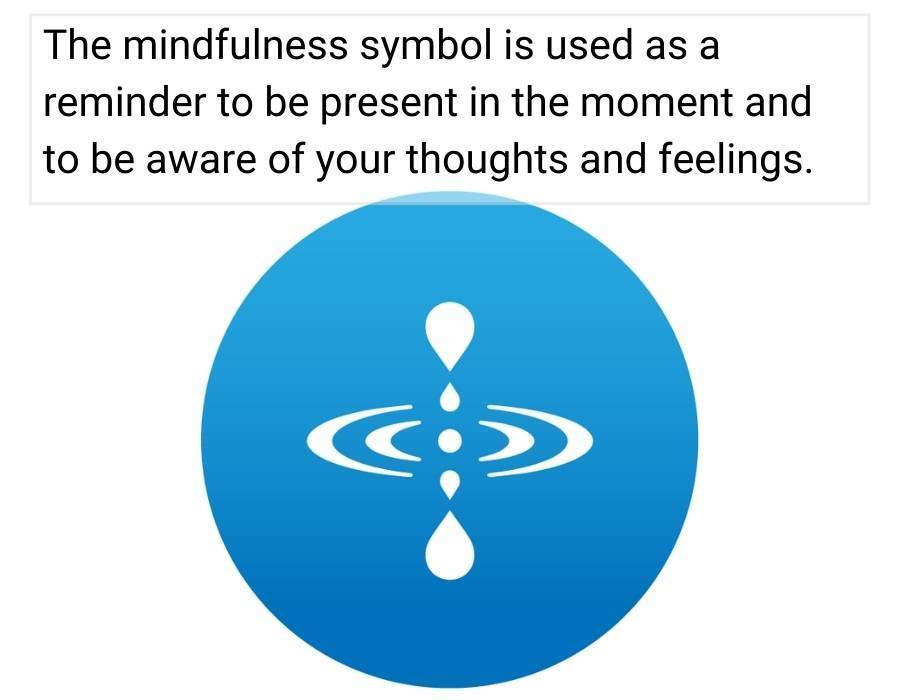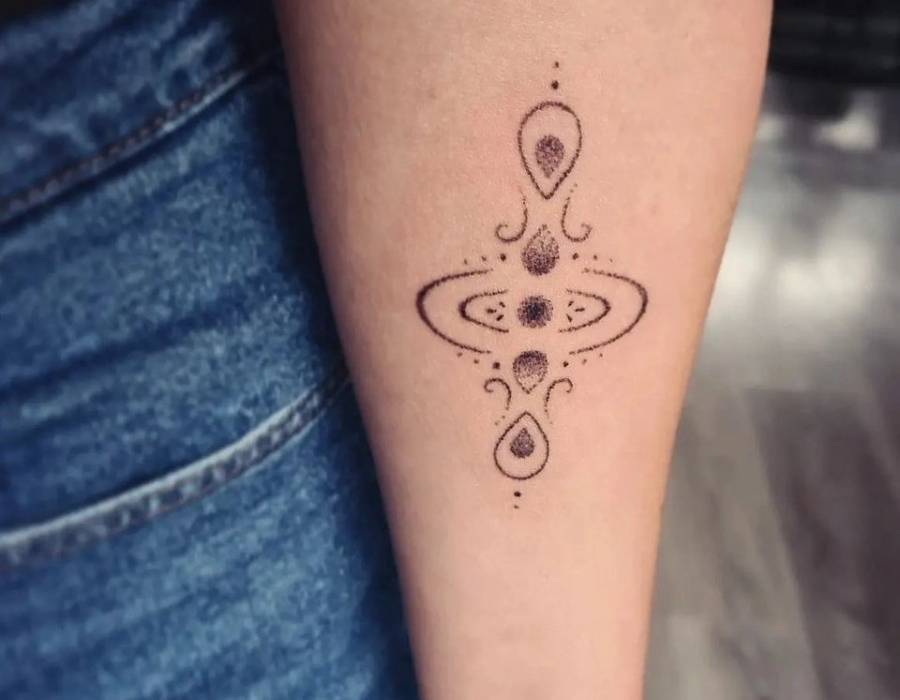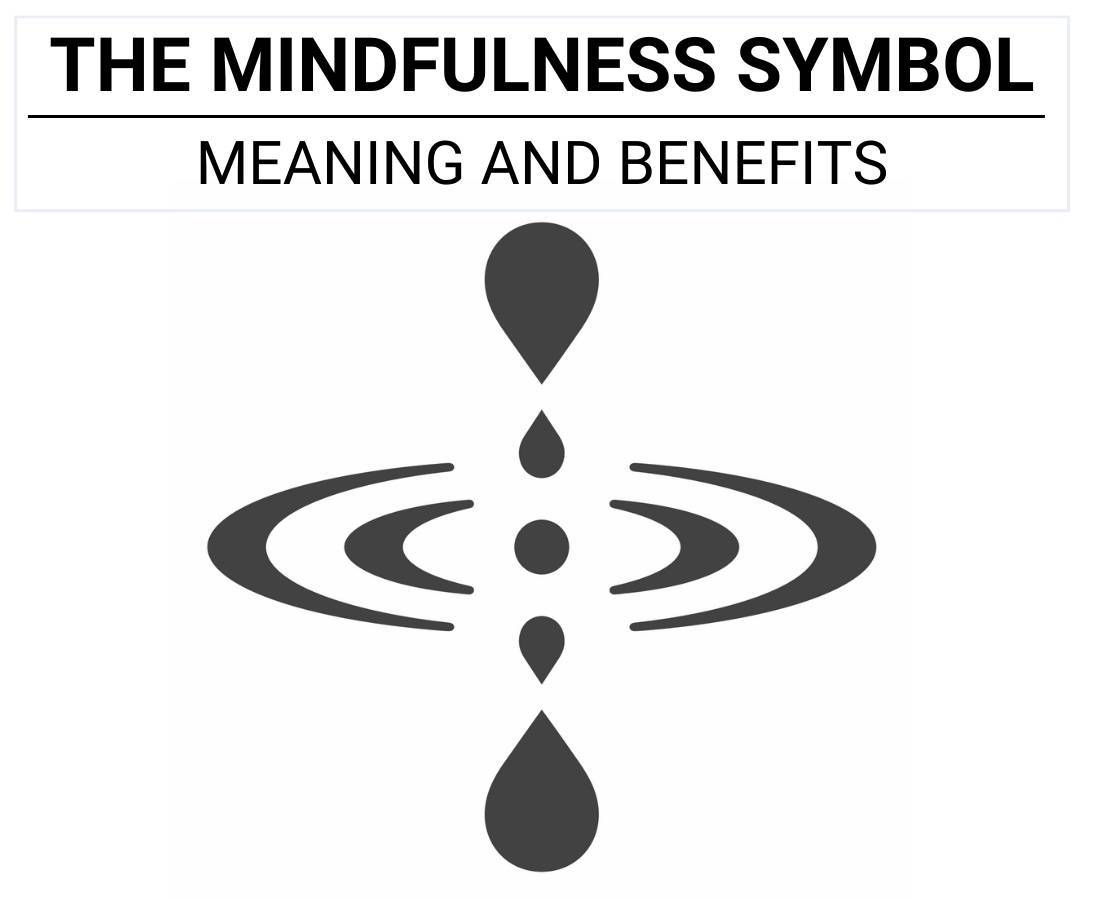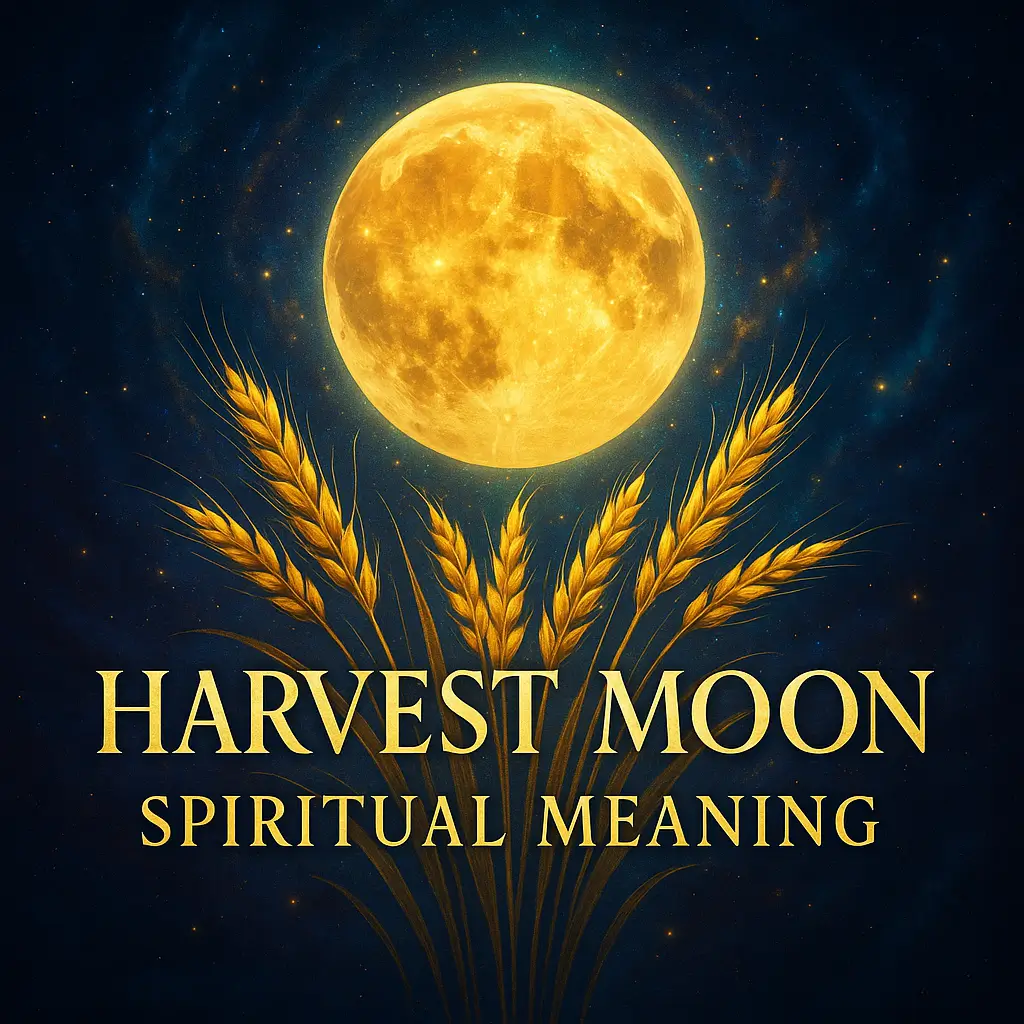What is mindfulness? Mindfulness is the practice of being present in the moment without judgment. This means being aware of your thoughts and feelings as they happen without getting caught up in them or trying to change them.
The mindfulness symbol is a popular image that is often used to represent mindfulness. But what does it mean, and what are the benefits of mindfulness?
In this blog post, we will explore the meaning and benefits of mindfulness using the mindfulness symbol as our guide.

Table of Contents
- 1 Key Takeaways
- 2 The Mindfulness symbol
- 3 Main benefits of the mindfulness symbol
- 4 Mindfulness throughout different cultures
- 5 Mindfulness symbolism associations
- 6 Exploring Mindfulness Symbols and Imagery as Reminders for Daily Practice
- 7 FAQ
- 7.1 What does a mindfulness symbol represent?
- 7.2 How can I use be present symbols in my daily life?
- 7.3 What are some common images of mindfulness used in practice?
- 7.4 What is the metta symbol and how does it relate to mindfulness?
- 7.5 What is Mindfulness Day and when is it celebrated?
- 7.6 How can mindfulness symbol art enhance my meditation space?
- 7.7 Are there cultural differences in symbols for mindfulness?
Key Takeaways
- Mindfulness is the practice of being present in the moment without judgment, allowing awareness of both your internal and external states.
- The mindfulness symbol represents interconnectedness and clarity, serving as a visual reminder to pause and become fully aware of the present moment.
- Mindfulness practices have existed across diverse cultures, from yoga and Ayurveda in India to sweat lodges in Native American traditions.
- Regular mindfulness practice helps you let go of attachments and recognize the law of cause and effect in your life.
- Using a mindfulness symbol as a visual cue in your environment can trigger moments of presence and help you respond rather than react to life’s challenges.

The Mindfulness symbol
The mindfulness symbol is a beautifully simple yet profound reminder of the importance of maintaining awareness in our lives. The symbol consists of two circles of equal size, representing the interconnectedness and interdependence of all things.
In the center of the symbol is a point, representing the clarity and focus that comes from being fully present in each moment. Both above and below the singular point are two drops of water, growing in size the further they are from the center.
These points symbolize the concept of ‘as above, so below,’ which means everything that happens, every action that you take, has an effect somewhere. The entire image creates an abstract drop of water, which symbolizes the present moment, or the Now.
When you’re present, you allow yourself the ability to be fully aware of both the external and internal worlds. When you are able to remain calm and centered in the midst of life’s ups and downs, you are better able to see things as they really are and make wise choices.

This doesn’t mean that you never feel emotions or that you become detached from life – rather, it means that you develop a more objective perspective and can better ride the waves of life’s challenges. The mindfulness symbol can be used as a reminder to stop and take a moment to breathe.
It can be placed on our desks, in our cars, or even on our phones as a reminder to pause and be present. When we see the mindfulness symbol, it can help us to remember that we are not our thoughts or emotions but rather observers of them.
We can then choose how we want to respond rather than react automatically.
Main benefits of the mindfulness symbol

- The symbol is used as a reminder to be present at the moment and to be aware of your thoughts and feelings.
- The symbol can be used as a tool to help you practice mindfulness.
- You can use the mindfulness symbol to remind yourself to take a few deep breaths and to focus on your breath.
- You can also use the mindfulness symbol to remind yourself to focus on your thoughts and feelings, and to observe them without judgment.
- It can also be used as a reminder to be kind to yourself and to treat yourself with compassion and understanding.
- The mindfulness symbol can help you to find peace, happiness, and joy in every moment
Mindfulness throughout different cultures
The idea of mindfulness has been around since the beginning of time and has been expressed throughout different cultures throughout history.
Indian culture
In India, yoga is often seen as a symbol of mindfulness. For many people in India, yoga and meditation is a way to connect with their spirituality and find inner peace.

Yoga is also seen as a way to connect with nature and the universe. In Indian culture, yoga is often seen as a way to live in the present moment and to be aware of your thoughts and feelings. Yoga can help you to focus on your breath and to be aware of your body and your surroundings.
Mindfulness is a key component of the Ayurvedic tradition, a practice native to Indian culture. This ancient system of medicine is based on the belief that our state of mind can have a profound impact on our health and well-being.
Ayurveda teaches that mindfulness can help us to achieve balance in our lives and prevent disease. It also promotes self-awareness and compassion, which are essential for good health.

When we are mindful, we are able to notice when we are out of balance and take steps to correct it. We can also be more present in the moment, which allows us to enjoy life more fully.
Practicing mindfulness can be as simple as taking a few deep breaths each day or spending time in nature. By incorporating this practice into our lives, we can reap the many benefits that Ayurveda has to offer.
Native American culture
Sweat lodges are used for mindfulness in Native American culture. A lodge is a place where one can go to be alone with their thoughts and to clear their mind. It is a place of peace and tranquility.
The sweat lodge is traditionally made of wood and covered with animal skins. It is usually circular in shape and has an opening on the top for the smoke to escape.
There are stones placed in the fire pit in the center of the lodge, and when they are heated, water is poured over them to create steam. The person who is sweating sits on the ground inside the lodge, wrapped in a blanket.

The ceremony can last anywhere from a few minutes to several hours, depending on what the person wants to achieve. Throughout the process, they focused on the purification of the mind, body, and spirit.
South American Culture
Ayahuasca is a plant that grows in the Amazon rainforest. It is used by the indigenous people of South America for mindfulness.
The plant contains DMT, which is a powerful psychedelic. Ayahuasca is usually brewed as tea and taken in ceremonies led by a shaman.
Ayahuasca can produce powerful hallucinations. These hallucinations can be intense and overwhelming, but they can also be very insightful.

Many people who have taken ayahuasca report having life-changing experiences. Ayahuasca can help you to see yourself and your life in a new way.
Ayahuasca can be a difficult experience, but it can also be very rewarding. Afterward, many people have an increased ability to be mindful and present in their lives indefinitely.
Mindfulness symbolism associations
The mindfulness symbol’s main themes are letting go, awareness, and cause and effect.
Letting Go
The mindfulness symbol is associated with letting go of attachments. Attachments are roles, obligations, and titles you connect yourself with, such as your career, relationship, and family.

The mindfulness symbol reminds you of who you truly are, which always exists in the present moments. When you allow yourself to let go of these attachments, you are more in tune with your inner source, which can only be experienced through mindfulness.
Awareness
When you allow yourself to be aware, you tap into more energy within your life. The mindfulness symbol reminds you of the need to gain a higher perspective and see life as a whole rather than separated. When you allow yourself to see the totality of who you are and what your life is, you’re able to move forward in a much more empowered state.
Cause and effect
The mindfulness symbol reminds you of the law of cause and effect. When you are mindful, you are able to better understand how your choices and actions will affect your outer world. Mindfulness also helps you understand how other people or external circumstances have affected you or how you’ve allowed them to affect you.
For in-depth teaching on the art of mindfulness, check out this video!
Exploring Mindfulness Symbols and Imagery as Reminders for Daily Practice
When incorporating mindfulness into your daily routine, visual symbols of mindfulness can serve as powerful reminders to return to the present moment. The traditional mindfulness symbol represents awareness and presence, but there are many variations and interpretations that can enhance your practice.
Popular Mindfulness Symbol Art and Images
Beyond the classic mindfulness symbol, many practitioners use various images of mindfulness in their meditation spaces or as personal talismans. The enso circle from Zen Buddhism, lotus flowers, or even simple geometric patterns can all function as be present symbols that trigger a return to awareness. These mindfulness symbols often appear in artwork, jewelry, and even tattoos, serving as constant visual cues to practice presence.
Many people choose to display mindfulness symbol art in their homes or workspaces. These visual reminders can transform ordinary moments into opportunities for practice. Whether it’s a small card on your desk or a painting on your wall, these symbols for mindfulness create touchpoints throughout your day that invite you to breathe, center, and reconnect with the present moment.
Mindfulness Day and Regular Practice
While symbols support ongoing practice, Mindfulness Day (observed annually on September 12th) offers a dedicated opportunity to deepen your commitment to presence. This global observance encourages both new and experienced practitioners to engage with mindfulness techniques. Many mindfulness communities host special events on this day, making it ideal for learning new approaches or refreshing your practice with mindful symbols and techniques.
The Metta symbol, representing loving-kindness meditation, is often incorporated alongside traditional mindfulness imagery during these celebrations. This complementary practice extends mindfulness beyond simple awareness into compassionate connection with ourselves and others. By integrating these different mindfulness symbols and practices, practitioners develop a more holistic approach to presence and awareness in daily life.
Whether you’re drawn to traditional symbols of mindfulness or create your own personal reminders, these visual cues can transform your environment into a sanctuary for presence. Each time you encounter your chosen symbol for being present, you have an opportunity to take a breath, release tension, and return to the clarity of the current moment – the true essence of mindfulness practice.
Sources
- https://teaching.usask.ca/indigenoussk/import/sweat-lodge_ceremony.php
- https://pubmed.ncbi.nlm.nih.gov/31927605/
- https://maps.org/news-letters/v08n3/08359gru.html
- https://www.yogabasics.com/learn/history-of-yoga/
- https://ayurvedicseattle.com/ayurvedic-guide-to-mindfulness-and-meditation/
- https://mindfulzen.co/mindfulness-symbol/
We have also a post about the symbolism of the mind and one about mediation and altered states of consciousness, check them out.
FAQ
What does a mindfulness symbol represent?
A mindfulness symbol typically represents awareness, presence, and interconnectedness. It serves as a visual reminder to return to the present moment, cultivate awareness, and practice non-judgment. Different traditions use various symbols that all share the common purpose of anchoring attention to the here and now.
How can I use be present symbols in my daily life?
Place be present symbols in areas you frequent daily—your desk, phone wallpaper, refrigerator, or bathroom mirror. When you notice the symbol, pause for a breath, check in with your body and mind, and gently return to the present moment without judgment.
What are some common images of mindfulness used in practice?
Common mindfulness images include the enso circle (symbolizing completeness), the lotus flower (representing purity amid challenges), Buddha figures, mandalas, geometric patterns, and natural elements like mountains or water. These images serve as visual anchors that remind practitioners to return to present-moment awareness.
What is the metta symbol and how does it relate to mindfulness?
The metta symbol represents loving-kindness meditation, often depicted as a heart or hands in prayer position. While mindfulness centers on non-judgmental awareness, metta extends this practice by cultivating compassion toward yourself and others, creating a more comprehensive approach to present-moment living.
What is Mindfulness Day and when is it celebrated?
Mindfulness Day is observed annually on September 12th as a global celebration of mindfulness practices. It offers opportunities to deepen your practice through community events, workshops, and guided meditations. Many practitioners use this day to renew their commitment to regular mindfulness practice.
How can mindfulness symbol art enhance my meditation space?
Mindfulness symbol art transforms your meditation space into a sanctuary by providing visual cues that trigger present-moment awareness. Artwork featuring mindfulness imagery helps create an environment conducive to practice, subtly reminding you to return to awareness even before you begin formal meditation.
Are there cultural differences in symbols for mindfulness?
Yes, mindfulness symbols vary across cultures. Eastern traditions use the enso circle and lotus flower, while indigenous practices might incorporate natural elements. Western adaptations often include simplified geometric designs. Despite these differences, all serve the universal purpose of anchoring awareness to the present moment.



